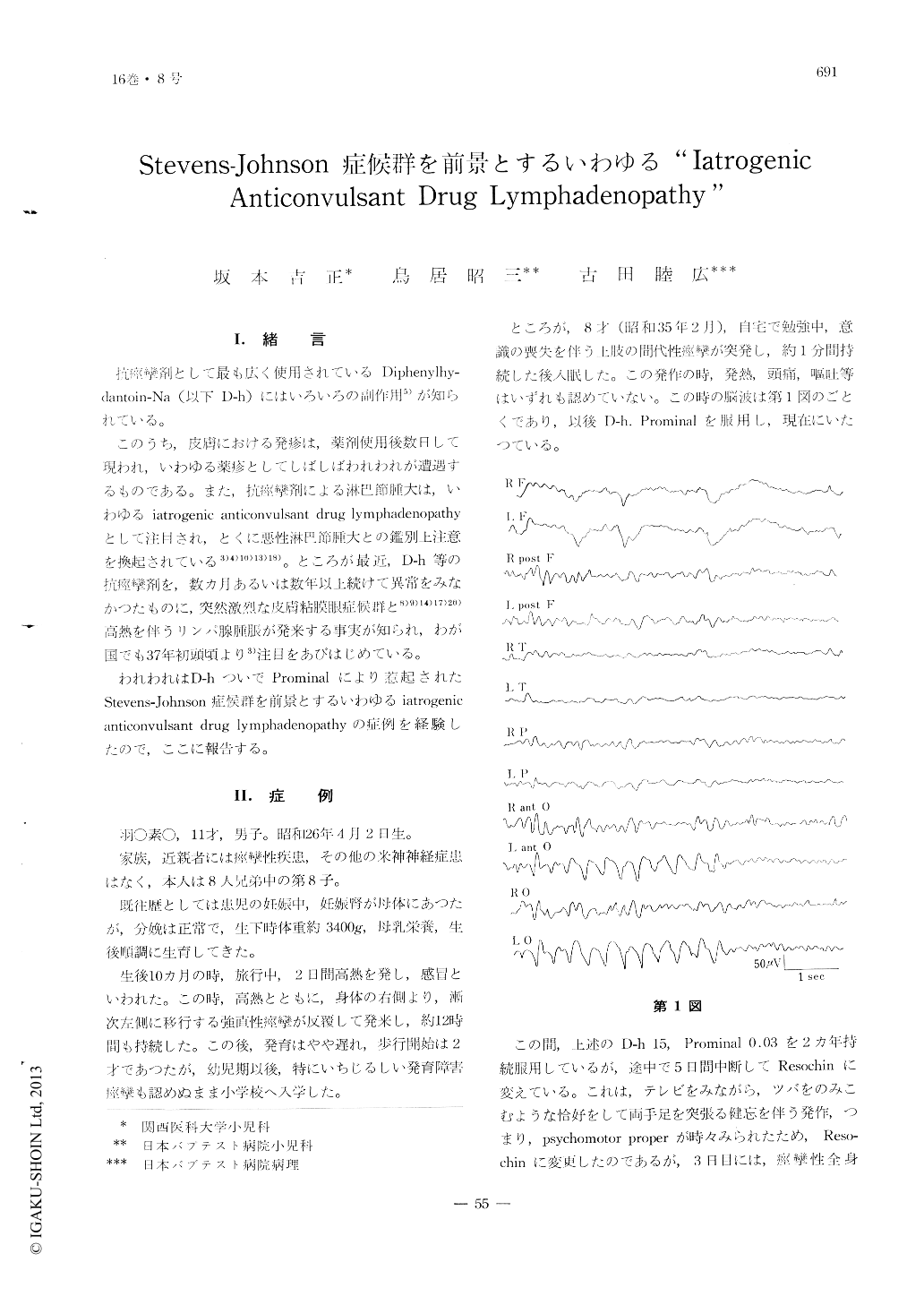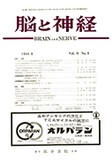Japanese
English
- 有料閲覧
- Abstract 文献概要
- 1ページ目 Look Inside
I.緒言
抗痙攣剤として最も広く使用されているDiphenylhy—dantoin-Na (以下D-h)にはいろいろの副作用5)が知られている。
このうち,皮膚における発疹は,薬剤使用後数日して現われ,いわゆる薬疹としてしばしばわれわれが遭遇するものである。また,抗痙攣剤による淋巴節腫大は,いわゆるiatrogenic anticonvulsant drug lymphadenopathyとして注目され,とくに悪性淋巴節腫大との鑑別上注意を換起されている3)4)10)13)18)。ところが最近,D-h等の抗痙攣剤を,数カ月あるいは数年以上続けて異常をみなかつたものに,突然激烈な皮膚粘膜眼症候群と8)9)14)17)20)高熱を伴うリンパ腺腫脹が発来する事実が知られ,わが国でも37年初頭頃より3)注目をあびはじめている。
A rare case is reported of so-called mucocutaneous ocular sydrome associated with iatrogenic anticon-vulsant drug lymphadenopathy caused by Diphenyl-hidantoin-Na and reactivated by Phenacemide.
An 11-year-old boy had his initial convulsion fol-lowed by physical retardation at 10 months of age. His second attack was of psychomoter type at 8 years of age. He was treated with Diphenylhydantoin-Na and Prominal for 2 years and 2 months without side effects or convulsions. However, he developed high fever suddenly at 11 years of age. on the 3rd day he began to have generahzed convulsions and on the 4th day a reddish measles like rash started on the face and then spread gradually over the body. On the 10th day generalized painful swelling of the lymphnodes was noted. The skin rash gradually changed to a scarlet-fever-like or exfoliative derma-titis and became severe. At the time of admission, 3 weeks after the onset of fever, clinical and labora-tory lindings were as follows; persistent fever, leuco-cytosis with eosinophilia, β-hemolytic streptococcal tonsillitis, severe stomatitis, urethritis and conjuncti-vitis; i.e. the so-called mucocutaneous ocular syndro-me, especially Stevens-Johhsan syedrome. His gene-ral condition deteriorated, with a hemolytic tendency and severe liver and renal damage with jaundice. However, improvemet follwed the discontinuation of Diphenylhydantoin-Na and medication with ACTH and β-methasone. Lymphnode biopsy showed destruc-tion of lymph follicles, proriferattion of reticulum cells and appearance of large phagocytes with brown pigment. Skin biopsy revealed hyper- and parakera-tosis but renal biopsy showed no sign of collagen disease.
The patient recovered, but the same disease was reactivaied by administration of only 0.5g of Phenacemide which was tried for continuing con-vulsions.
In the Pathogenesis of anticonvulsant drug lym-phadenopathy with mucocutaneous ocular symdrome, the authors considered the precipitating factor to be a streptococcal or viral infection since the ASL-O titer and the Paul-Bunel test.

Copyright © 1964, Igaku-Shoin Ltd. All rights reserved.


